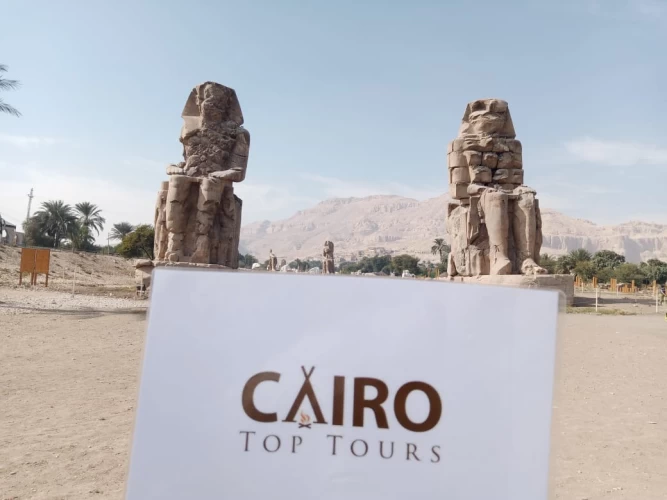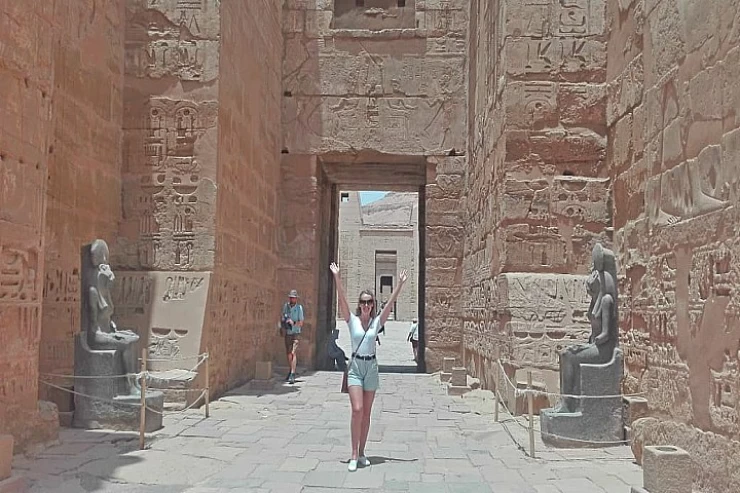Our representative with an expert guide will be waiting for you at your hotel or anywhere in Luxor to take you in a private air-conditioned car to discover the West Bank of Luxor.
We explored at the beginning. The Temple of Queen Hatshepsut was built in the splendid temple of Deir el-Bahri on the west bank of Luxor, opposite that of Karnak on the east bank, the main temple of Amun. After her death, Queen Hatshepsut was transformed into the idol Osiris and honored in rites celebrated in the temple of Jisro. She was not the only person honored in the temple; there were sections dedicated to Anubis, the goddess Hathor, the goddess Anatolia, and her father, King Thutmose I. At the end of the upper courtyard, there was a passageway carved into the mountain leading to the Holy of Holies, a large area dedicated to the deity Amun, and a sky-opening chamber devoted to Ra Hor Ashti, the sun god.
Then, in our second step, we explore the Valley of the Kings. Most of the kings of the XVIII, XIX, and XX dynasties of the New Kingdom. This area is known as the "Valley of the Kings" because, between 1550 and 1069 BC, some members of the royal family who were not kings were interred in the dry river valley on the west bank of the ancient city of Thebes (present-day Luxor) , Yet, this name is not true. as well as some non-royal individuals, although of high rank. The Valley of the Kings is divided into eastern and western valleys. While there aren't many graves in the west, the east is the more well-known. In total, the Valley of the Kings has more than sixty tombs and twenty unfinished tombs that are little more than pits.
After visiting the Temple of Queen Hatshepsut and the Valley of the Kings, we head to the Temple of King Ramses II (circa 1279-1213 BC) built the Ramsseum. The most famous king of ancient Egypt (who fought in the battle of Kadesh against the Hittites) built the Ramsesum, a funerary temple built in sandstone, and this temple was taken as a model for the construction of the temples of later kings. The temple also consists of the first pylon, which is a huge building whose outer facade is decorated with four antlers. While the initial courtyard, which has since been destroyed, and images from the well-known battle of Kadesh are depicted on its inner facade, to the left of the second pylon are the remains of a huge statue of Ramses II made of black granite, and on its south side are two rows of columns. the second courtyard, higher than the first but also demolished, had rows of papyrus columns and Osirian columns, followed by the Vestibule of the Arches with six rows of columns.
We will close our day trip with a visit to the Colossi of Memnon, the remains of a temple built by King Amenhotep III and known as the “two statues of Memnon”. They were considered one of the wonders of the ancient world and are visible as you cross the Nile on your way to the treasures of the western land.
Finally we return you to your accommodation in Luxor.




















